What is the zodiac?
January 9, 2019

Moon lovers! Order this year’s EarthSky lunar calendar here
The zodiac, the 12 signs listed in a horoscope, is closely tied to how the Earth moves through the heavens. The signs are derived from the constellations that mark out the path on which the sun appears to travel over the course of a year. You might think that dates in a horoscope correspond to when the sun passes through each constellation. But they don’t, much of the time, because astrology and astronomy are different systems. Plus, a closer examination of the motion of the Earth, the sun, and the stars show the zodiac to be more intricate than you might imagine!
As Earth orbits the sun, the sun appears to pass in front of different constellations. Much like the moon appears in a slightly different place in the sky each night, the location of the sun relative to distant background stars drifts in an easterly direction from day to day. It’s not that the sun is actually moving. Its motion is entirely an illusion, caused by Earth’s own motion around our star.

Over the course of a year, the sun appears to be in front of, or “in”, different constellations. One month, the sun appears in Gemini; the next month, in Cancer. The dates listed in the newspaper’s horoscope identify when the sun appears in a particular astrological sign. For example, March 21 through April 19 are set aside for the sign Aries. But your astrological sign doesn’t necessarily tell you what constellation the sun was in on the day you were born.
If only it were that simple!
To understand why constellations no longer align with their corresponding signs, we need to know a little bit more about how the Earth moves. And something about how we measure time.
Time is a fiendishly difficult thing to define, especially if we insist on using the sun and stars as a reference. Our calendar is, for better or worse, tied to the seasons. June 21 – the approximate date of summer solstice above the equator and the winter solstice below – marks the day the sun appears at its most northerly point in the sky. At the June solstice, the North Pole is most tilted towards the sun.
What makes this complicated is that the North Pole is not always pointing in the same direction relative to the backdrop stars. Our planet spins like a top. And like a top, the Earth also wobbles! A wobbling Earth makes the North Pole trace out a circle on the celestial sphere. The wobble is quite slow, requiring 26,000 years to go around once. But, as the years go by, the effect accumulates.

Over the course of one orbit around the sun, the direction of the Earth’s axis drifts ever so slightly. This means that where along our orbit the solstice occurs also changes by a very small amount. The solstice actually occurs about 20 minutes earlier than one full trip in front of the backdrop stars!
Since we tie our calendar (and astrologers tie the signs) to the solstices and equinoxes, the Earth does not actually complete an entire orbit in one year. The seasonal or tropical year is actually a hairless time than one full orbit (sidereal year). This means that each year, where the sun is relative to the stars on any given day – June 21, for example – drifts a very tiny amount.
But wait about 2,000 years, and the sun will be sitting in an entirely different constellation!
On the June solstice 2,000 years ago, the sun was sitting almost halfway between Gemini and Cancer. On this year’s June solstice, the sun will be sitting between Gemini and Taurus. In the year 4609, the June solstice point will pass out of the constellation Taurus and into the constellation Aries.
The signs more or less aligned with their corresponding constellations when the modern Western zodiac was defined about 2,000 years ago. But in the intervening centuries, the slow wobble of the Earth’s axis has caused the solstice and equinox points to shift roughly 30 degrees westward relative to the constellations. At present, signs and constellations are about one calendar month off. In another two thousand years or so, they’ll be about two months off.

To complicate matters more, the constellations – unlike the astrological signs – are not of equal size and shape. The stars that make up a constellation are not, for the most part, physically related. The constellations are just patterns that our ancestors saw as they gazed skyward and tried to make sense of it all. Today’s constellations are specific to ancient Greek culture. Most of them were introduced by the Greek astronomer Ptolemy in the second century A.D. (who in turn borrowed them from ancient Babylonian texts). Different cultures have seen patterns in the sky unique to their history. Some constellations are shared by many cultures (Orion is a notable example), but most are not.
The modern constellation boundaries weren’t defined until 1930 by the International Astronomical Union. With the current boundaries, there are actually 13 constellations that lie along the sun’s path. The extra one not listed in any horoscope is Ophiuchus, the Serpent Bearer, who sits between Sagittarius and Scorpius. Whereas the signs remain fixed relative to the solstices and equinoxes, the solstices and equinoxes drift westward relative to the constellations or backdrop stars.
While the zodiac may not be a great predictor of love, fortune, and health, it is a great tool for better understanding the motions of the sun, the Earth, and even the cultures that have come and gone on our little planet. The zodiac signs, derived from the constellations along the sun’s path in the sky, track the orbit and wobble of Earth and remind us of astronomy’s humble roots.
Bottom line: You might associate the word zodiac with astrology, but it has an honoured place in astronomy, too. The zodiac is defined by 12 constellations that lie along the annual path of the sun across the sky.
——————————————————————————————————————–
Why your zodiac sign is probably wrong
January 24, 2020
Author
- James B. KalerProfessor Emeritus of Astronomy, the University of Illinois at Urbana-Champaign
Disclosure statement
James B. Kaler does not work for, consult, own shares in or receive funding from any company or organisation that would benefit from this article, and has disclosed no relevant affiliations beyond their academic appointment.
Republish our articles for free, online or in print, under Creative Commons licence.
Republish this article
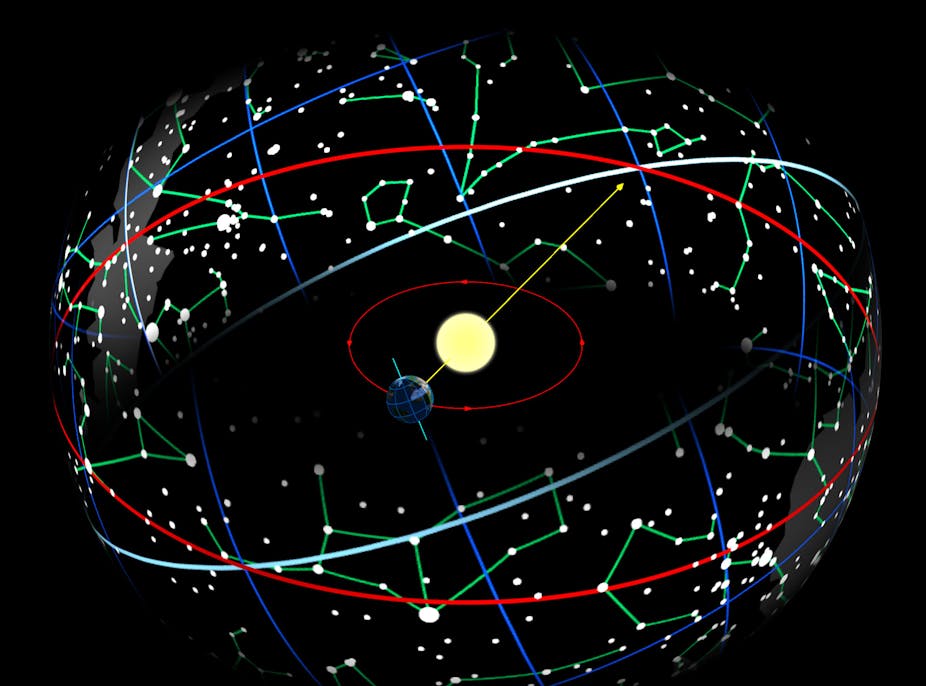
I was born a Capricorn (please don’t judge me), but the Sun was in the middle of Sagittarius when I was born.
As a professor emeritus of astronomy, I am often asked about the difference between astrology and astronomy. The practice of astrology, which predicts one’s fate and fortune based on the positions of the Sun, Moon, stars and planets, dates back to ancient times. It was intermingled with the science of astronomy back then – in fact, many astronomers of old made scientific observations that are valuable even today. But once Copernicus, Kepler and Galileo realized the planets orbit the Sun, rather than the Earth, and Newton discovered the physical laws behind their behaviour, astrology and astronomy split, never to be reunited.
The science of astronomy is now at odds with one of the basic organizing principles in astrology – the dates of the zodiac.
The constellations of the zodiac
Over the course of a year, the Sun appears to pass through a belt of sky containing 12 ancient constellations, or groupings, of stars. They are collectively called the zodiac and consist almost entirely of animal figures, like the ram (Aries), crab (Cancer) and lion (Leo). It is a disappointment to many that the constellations only rarely look like what they represent. How could they, since they are truly random scatterings of stars? They are meant to represent, not to portray.
We can help you make informed decisions with our independent journalism.
Get newsletter
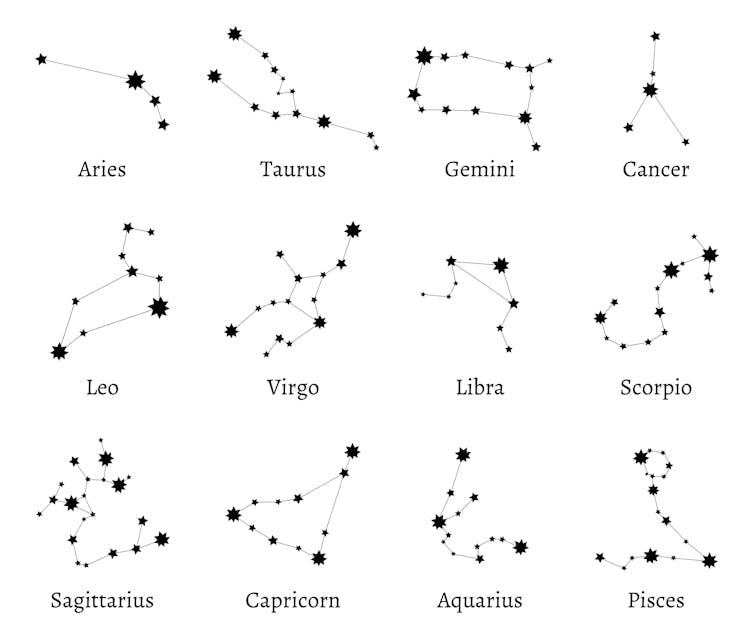
Although the constellations of the zodiac, which date back to Mesopotamia or before, may seem definitive, they are only one example of those produced by the various cultures of the world, all of which had their own, frequently very different, notions of how the sky is constructed. The Incas, for example, made constellations not from stars, but from the dark patches in the Milky Way.
The number of constellations in the Western zodiac comes from the cycles of the Moon, which orbits the Earth 12.4 times a year. Roughly speaking, the Sun appears against a different constellation every new Moon, the stars forming a distant backdrop to the Sun. Though the stars are not visible during daytime, you can know what constellation the Sun is in by looking at the nighttime sky. There you will see the opposite constellation.
Astrology suggests that each sign of the zodiac fits neatly into a 30-degree slice of sky – which multiplied by 12 adds up to 360 degrees. In actuality, this is not the case, as the constellations vary a great deal in shape and size. For example, the Sun passes through the constellation Scorpio in just five days but takes 38 days to pass through Taurus. This is one of the reasons astrological signs do not line up with the constellations of the zodiac.
Precession of the equinoxes
The main reason astrological signs fail to line up with the zodiac, though, is a wobble in the Earth’s rotational axis called precession. As a result of its rotation, the Earth bulges slightly at the equator, not unlike how a skater’s skirt fans out as she spins. The gravity of the Moon and Sun pulls on the bulge, which causes the Earth to wobble like a top. The wobble causes the Earth’s axis, which is the centre line around which it rotates, to swing in a slow circle over the course of 25,800 years. A wobbling Earth causes the dates of the zodiac to shift from those established in ancient times.
This movement alters the view of the zodiac from Earth, making the constellations appear to slide to the east, roughly a degree per human lifetime. Though slow, precession was discovered with the naked eye by Hipparchus of Nicaea around 150 B.C.
In ancient times, the vernal equinox – or the first day of spring – was in Aries. Due to precession, it moved into Pisces around 100 B.C., where it is now and will remain until A.D. 2700, when it will move into Aquarius and so on. Over the course of 25,800 years, it will eventually return to Aries and the cycle will begin again.
As a game, astrology and its predictions of fate and personality can be fun. However, the subject has no basis in science. It is to science what the game “Monopoly” is to the real estate market.
Astrology diverts attention away from the very real influences of the planets, primarily their gravitational effects on one another that cause real changes in the shapes, sizes and tilts of their orbits. On Earth, such changes likely caused past ice ages. Direct collisions between Earth and celestial bodies can cause very rapid changes, such as the impact of an asteroid off the Yucatan Peninsula 66 million years ago that had global effects including the disappearance of dinosaurs and the rise of mammals.
Astronomical studies will eventually allow the prediction of such events, while astrological predictions will get you absolutely nowhere.
This story has been updated to correct the animal that Aries represents. The chart has been updated to include Oct. 31 under Virgo, where it falls most years.
- Astronomy
- Astrology
- Moon
- Sun
- Galileo
- Copernicus
- Kepler
- Constellations
- Zodiac
- Global perspectives
- Earth’s axis
- Libra
- Vernal equinox
A new way to enjoy our articles
If you enjoy reading our articles, then you’ll also like listening to them. You can now listen to a selection of articles from The Conversation Canada. We’ve teamed up with a Canadian company called Ad Auris to offer AI audio narrations, which sound great.
Listen now
Scott White
https://theconversation.com/why-your-zodiac-sign-is-probably-wrong-128818
—————————————————————————————————————-
ASTROLOGICALASTRONOMICALConstellationDatesConstellationDatesAries March 21 – April 20
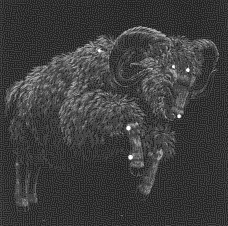
April 19 – May 13
(25 days)Taurus April 21 – May 21
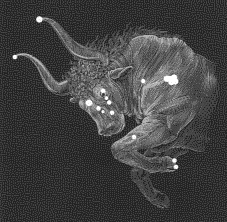
May 14 – June 19
(37 days)Gemini May 22 – June 21
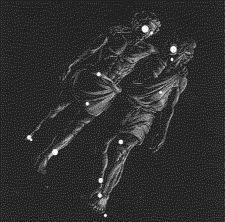
June 20 – July 20
(31 days)CancerJune 22 – July 22
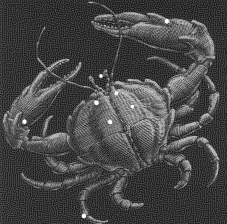
July 21 – August 9
(20 days)Leo July 23 – August 23
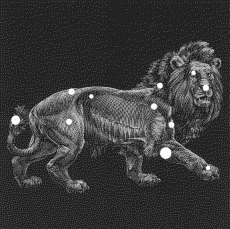
August 10 – September 15
(37 days)Virgo August 24 – September 23
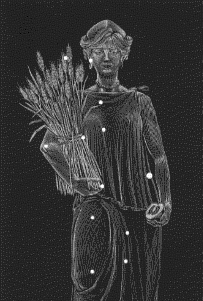
September 16 – October 30
(45 days)LibraSeptember 24 – October 23
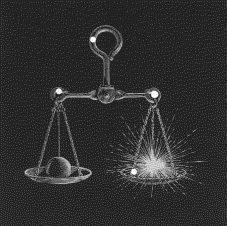
October 31 – November 22
(23 days)ScorpiusOctober 24 – November 22
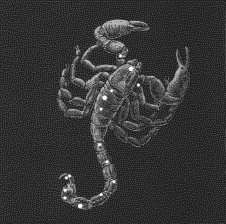
November 23 – November 29
(7 days)OphiuchusNot recognized as a sign of the zodiac by astrologersOphiuchusNovember 30 – December 17
(18 days)SagittariusNovember 23 – December 21
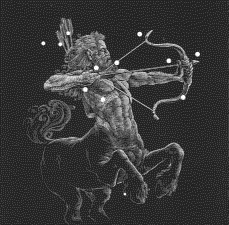
December 18 – January 18
(32 days)CapricornusDecember 22 – January 20
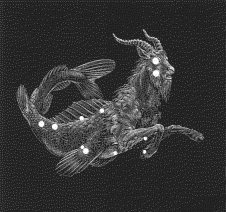
January 19 – February 15
(28 days)Aquarius January 21 – February 19
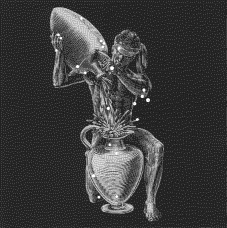
February 16 – March 11
(24 days)Pisces February 20 – March 20
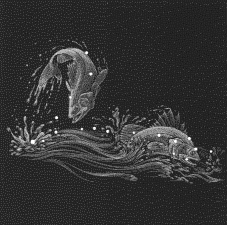
March 12 – April 18
(38 days)

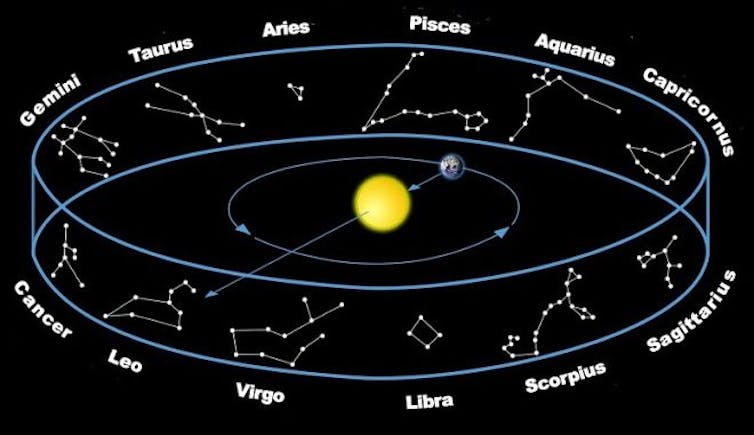
Leave a Reply
You must be logged in to post a comment.